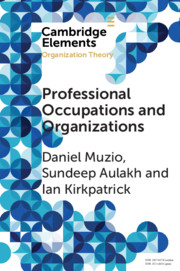Element contents
Professional Occupations and Organizations
Published online by Cambridge University Press: 20 December 2019
Summary
Keywords
- Type
- Element
- Information
- Series: Elements in Organization TheoryOnline ISBN: 9781108804318Publisher: Cambridge University PressPrint publication: 16 January 2020
References
- 24
- Cited by

